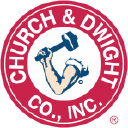/ factorpad.com / stocks / f44npd.html
An ad-free and cookie-free website.
Our quantitative data points are meant to provide a high-level understanding of factors in equity risk models for Church & Dwight Co Inc. Portfolio managers use these models to forecast risk, optimize portfolios and review performance.
We show how CHD stock compares to 2,000+ US-based stocks, and to peers in the Manufacturing sector and Soap and Other Detergent Manufacturing industry.
Please do not consider this data as investment advice. Data is downloaded from sources we deem reliable, but errors may occur.
 Church & Dwight Co., Inc. founded in 1846, is the leading U.S. producer of sodium bicarbonate, popularly known as baking soda. The Company manufactures and markets a wide range of personal care, household, and specialty products under recognized brand names such as ARM & HAMMER®, TROJAN®, OXICLEAN®, SPINBRUSH®, FIRST RESPONSE®, NAIR®, ORAJEL®, XTRA®, L'IL CRITTERS® and VITAFUSION®, BATISTE®, WATERPIK®, FLAWLESS®, and ZICAM®. These thirteen key brands represent approximately 80% of the Company's products sales.
Church & Dwight Co., Inc. founded in 1846, is the leading U.S. producer of sodium bicarbonate, popularly known as baking soda. The Company manufactures and markets a wide range of personal care, household, and specialty products under recognized brand names such as ARM & HAMMER®, TROJAN®, OXICLEAN®, SPINBRUSH®, FIRST RESPONSE®, NAIR®, ORAJEL®, XTRA®, L'IL CRITTERS® and VITAFUSION®, BATISTE®, WATERPIK®, FLAWLESS®, and ZICAM®. These thirteen key brands represent approximately 80% of the Company's products sales.
Many of the following risk metrics are standardized and transformed into quantitative factors in institutional-level risk models.
Rankings below represent percentiles from 1 to 100, with 1 being the lowest rating of risk.
Stocks with higher beta exhibit higher sensitivity to the ups and downs in the market. (↑↑)
Stocks with higher market capitalization often have lower risk. (↑↓)
Higher average daily dollar volume over the past 30 days implies lower liquidity risk. (↑↓)
Higher price momentum stocks, aka recent winners, equate to lower risk for many investors. (↑↓)
Style risk factors often include measures of profitability and payout levels.
Companies with higher earnings generally provide lower risk. (↑↓)
Companies with higher dividend yields, if sustaintable, are perceived to have lower risk. (↑↓)
/ factorpad.com / stocks / f44npd.html
A newly-updated free resource. Connect and refer a friend today.